Sediment Removal Systems
Why Sediment Removal is Essential for Water Systems
Sediment in water can cause significant problems for homes, businesses, and industries, affecting both water quality and the longevity of equipment. If not addressed, sediment buildup can result in:
Clogged Pipes and Fixtures: Reduced water flow and pressure, impacting system efficiency.
Damaged Appliances: Premature wear and failure of washing machines, water heaters, and valves.
Contaminated Processes: Damaging products in manufacturing due to contaminated water.
Higher Maintenance Costs: Increased frequency of filter changes and costly repairs.
Health Concerns: Sediment can harbor bacteria, reducing the safety and quality of your water.
Investing in a proper sediment removal system helps protect your plumbing, appliances, and overall water quality while saving you money over time.
How Sediment Removal Systems Work
The Filtration Process
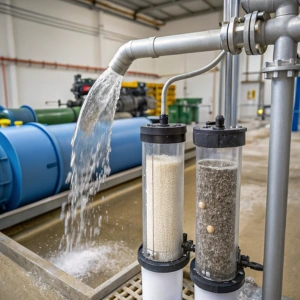
Water enters the filtration system
Raw water flows into the sediment filter.
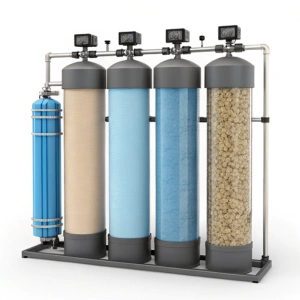
Particles are trapped by filter media
Sediment, sand, rust, and other particles are captured in the filter
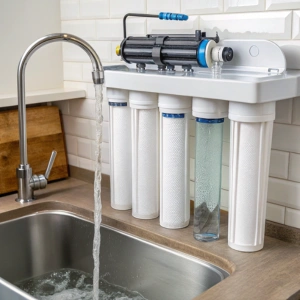
Clean water flows to your fixtures
The filtered water is directed to your plumbing and fixtures.
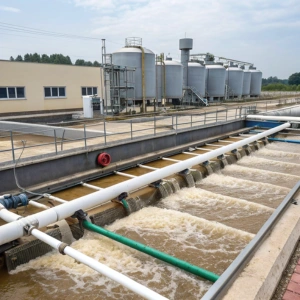
Automatic backwashing
Some systems clean themselves through automatic backwashing to ensure consistent performance.
Types of Sediment Removal Systems
Spin-Down Filters
- Best For: Large particles (100+ microns).
- How It Works: Centrifugal force spins out sediment.
- Maintenance: Manual flush valve to remove accumulated sediment.
Cartridge Filters
- Best For: Medium particles (1-100 microns).
- Types: String-wound, pleated, or depth filters.
- Maintenance: Replace cartridges every 3-6 months.
Backwashing Filters
- Best For: Whole-house or industrial applications.
- Media Options: Sand, multimedia, or catalytic media.
- Maintenance: Automatic self-cleaning function reduces manual effort.
Centrifugal Separators
- Best For: High-flow industrial systems.
- How It Works: Uses centrifugal force to separate sand, grit, and heavy particles.
- Maintenance: Virtually maintenance-free, making it ideal for high-demand systems.
Choosing the Right Sediment Filter
| Particle Size | Recommended System | Typical Applications |
|---|---|---|
| 200+ microns | Spin-down filter | Well water, irrigation |
| 50–200 microns | Bag filter | Industrial pretreatment |
| 5–50 microns | Cartridge filter | Residential, food service |
| 1–5 microns | Depth filter | Final polishing for clean water |
Industry-Specific Sediment Solutions
Residential Systems
Whole-house sediment filters: Clean water for every fixture in your home.
Washing machine protectors: Reduce appliance wear and tear.
Refrigerator/ice maker filters: Ensure clean, high-quality water for drinking and ice.
Commercial Applications
Restaurant water pretreatment: Protect kitchen equipment and maintain water quality.
Hotel and multifamily building systems: Whole-building protection to ensure consistent water supply.
Car wash water recycling: Remove sediment and contaminants from wash water for reuse.
Industrial Uses
Cooling tower protection: Prevent sediment buildup that could damage cooling systems.
Process water treatment: Clarify water used in industrial manufacturing processes.
Wastewater solids removal: Remove sediment from wastewater streams to improve discharge quality.
Key Features of Quality Sediment Removal Systems
1
High Flow Rates: Systems designed for flow rates up to 100+ GPM for industrial applications.
2
Automatic Backwashing: Self-cleaning systems that reduce manual labor.
2
3
Corrosion-Resistant Housings: Stainless steel or fiberglass housings for durability.
4
Easy Maintenance: Quick-change cartridges or self-cleaning functionality for low-maintenance operation.
4
5
Pressure Monitoring: Gauges to track filter condition and performance.
Sediment Removal vs. Other Filtration Methods
| Method | Removes | Best For | Maintenance |
|---|---|---|---|
| Sediment Filters | Sand, silt, rust | Particle removal | Regular cleaning |
| Carbon Filters | Chemicals, chlorine | Taste/odor removal | Replace cartridges |
| RO Systems | Dissolved solids | Pure drinking water | Membrane cleaning |
| UV Systems | Microorganisms | Disinfection | Lamp replacement |
Installation & Maintenance Guide
Installation Options
Point-of-Entry (POE): Whole-house protection for a consistent water supply.
Point-of-Use (POU): Single fixture protection, ideal for specific applications like refrigerators or washing machines.
Maintenance Schedule
Spin-down filters: Flush weekly to remove sediment buildup.
Cartridge filters: Replace every 3-6 months depending on usage and water quality.
Backwashing filters: Set to cycle monthly for automatic cleaning.
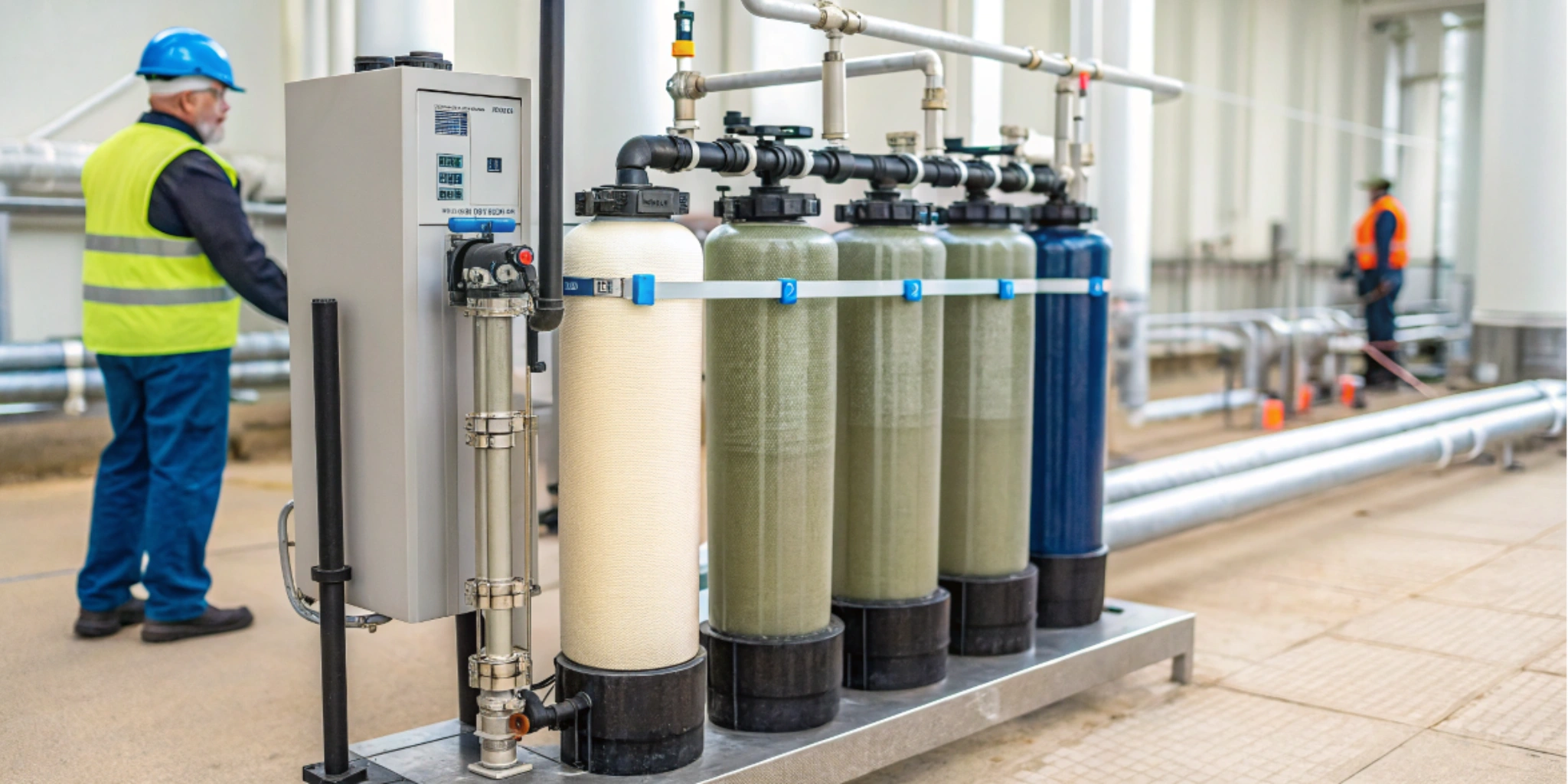
Why Choose Our Sediment Removal Systems?
25+ Years in Water Filtration: Industry-leading experience.
NSF-Certified Components: Ensures quality and compliance with industry standards.
Custom Solutions for Any Application: Tailored filtration systems for residential, commercial, and industrial use.
Nationwide Installation Network: Local professionals for fast and efficient installation.
Extended Warranties Available: Peace of mind with long-term protection.
Frequently Asked Questions
How small of particles can sediment filters remove?
Sediment filters can remove particles as small as 1 micron, with fine filters achieving greater filtration.
Do sediment filters affect water pressure?
Properly sized systems are designed to maintain water pressure and flow rates.
Can I clean and reuse sediment filters?
Some sediment filters are washable, but most cartridge filters require replacement when they reach the end of their lifespan.
How long do sediment filters last?
The lifespan of sediment filters ranges from 3 months to several years, depending on the filter type and water usage.
